Sports
Why Savannah Bananas tickets cost more than Dodgers vs. Yankees
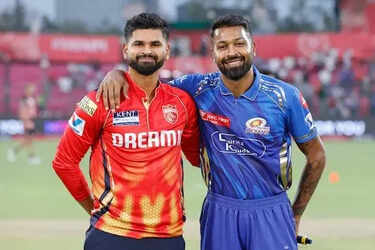
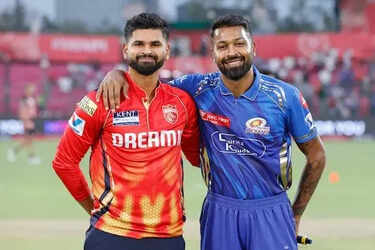
In a region where baseball is king, the long-awaited rematch of last year’s World Series between the Dodgers and Yankees is unfolding. Ohtani. Judge. Two of the game’s best, facing off once more.
But just down the 5 Freeway in Anaheim, the home of Disney, the hottest ticket in baseball this weekend belongs to a stilted pitcher, juggling infielders and a yellow-suited, top hat-wearing carnival barker.
For back-to-back nights, more than 45,000 fans packed the Big A to see the Savannah Bananas — a team born from a small-time collegiate summer team that became a tour de force that has forever changed baseball. It was one stop during the Bananas’ most audacious barnstorming effort since their baseball traveling show hit the road just a few years ago.

The Savannah Bananas celebrate amid confetti after beating the Firefighters at Angel Stadium on Friday.
(Luke Johnson / Los Angeles Times)
These tickets were only available through a lottery — reserved months in advance. And when they went on sale, all were gone in an instant. The only way in was through the resale market, where just hours before first pitch on Friday, the lowest price (fees and taxes included) for a pair of tickets on StubHub was $209.52.
Meanwhile, two lowest price StuHub tickets for the Dodgers versus Yankees game were available for $171.72.
All for the sake of “Banana Ball.”
This baseball game is a ballyhoo. One rooted in the thrills, energy and pageantry of early 20th-century carnivals, but with a 21st-century twist — the atmosphere of a TikTok reel brought to life. It’s the showmanship of Ringling Brothers Circus combined with the athletic flair of the Harlem Globetrotters.
But above all, it’s a brand built on Walt Disney’s blueprint— not just to entertain, but to make the audience feel.
“When you look at all the touch points — the joy, the fun, the dancing, the celebrating — and think about all the different stages, just like Walt, we think about all the stages: from the parking lot to the plaza, to the upper deck, to the dugouts,” said Bananas owner Jesse Cole, the man in the top hat. “How do we make someone feel something?”
Instead of lounging in a cushy, air-conditioned owner’s suite, Cole is in the dugout hours before showtime — a Disney-like archetype, his energy as vibrant as his layered, all-yellow suit, braving the afternoon heat.

Savannah Bananas founder and owner Jesse Cole leads the crowd in a cheer as his team takes on the Firefighters at Angel Stadium on Friday.
(Luke Johnson / Los Angeles Times)
“Nonstop,” Cole said, describing Banana Ball in a nutshell. Refusing to sit, not wanting to lose an ounce of edge, he added, “It’s all about energy. We want to give people energy, delivering it every second, from the moment we open the gates at two o’clock until the last fan leaves at 11.”
While gates opened at 2 p.m., fans began arriving as early as 11 a.m. — clamoring for a shot at Banana-themed merchandise, many leaving the team tents with bags in both hands. In the parking lot, two young boys passed the time playing catch, gloves in hand.
As the afternoon wore on and the temperature climbed to 91 degrees, crowds trudged through the heat, some seeking refuge beneath the oversized Angels helmets at the stadium entrance, all for a chance to meet their favorite Banana Ballers. At the pregame plaza party, fans collected autographs, posed for photos and presented handmade gifts to players.

Savannah Bananas mascot Split marches through the crowd before the team’s game against the Firefighters at Angel Stadium Friday.
(Luke Johnson / Los Angeles Times)
When the gates opened, the LaCaze family pointed out their 9-year-old daughter’s favorite player, David “DR” Meadows. Decked out in her signed Meadows jersey, Carrigan LaCaze ran into his arms, with glove and oversized baseball clutched tightly and began speaking with him as if they were old friends.
“I ran to DR, and we started hugging and just started talking for a while because I missed him,” Carrigan LaCaze said. “Tomorrow is actually one year on the dot since I met him.”
A Christmas road trip planned around the holidays, the family of four traveled across three states from their home in Alexandria, La., to Anaheim for two reasons: to visit Disneyland and see the Bananas. It was their second game — the family first saw the Bananas in the club’s hometown of Savannah, Ga., when Carrigan, who is battling cystic fibrosis, was granted a Make-A-Wish experience so meaningful it was a no-brainer to relive it.
“It’s great,” her father, Pierre LaCaze, said of the player interactions. “We’ve gotten to keep track with some of them during the course of the year. We come back, we see them again. You know they’re truly about the fans.”

Rainer Easton, 11, tries to catch a yellow “Banana Ball” from the stands before the Savannah Bananas take on the Firefighters at Angel Stadium on Friday.
(Luke Johnson / Los Angeles Times)
The Bananas don’t sell tickets. They sell connections, moments and memories.
For Cole, meetings are a constant brainstorming session on how to keep fans engaged and interacting. That’s how he measures success. He says when the focus shifts to transactions, the game begins to lose its meaning.
“Our success is not judged by revenue,” Cole said. “It’s not judged by sales. It’s judged by the moments we create.”
But the numbers don’t lie.
The last time the Bananas came to Southern California, they played in front of 5,000 fans at LoanMart Field in Rancho Cucamonga in 2023 — a far cry from now selling out 18 major league ballparks and three football stadiums with capacities over 70,000.

Fans fill the stands as the Savannah Bananas take on the Firefighters in front of a sold out crowd Friday at Angel Stadium.
(Luke Johnson / Los Angeles Times)
Attendance has soared year after year. Last season, the Bananas drew one million fans. This year, that number is expected to double, with more than three million people on the waitlist for their ticket lottery. Every game since February has sold out and every date in June and July is as well.
Michael and Melinda Schulteis, a husband and wife from Mission Viejo, were there the last time the Bananas came to town. When they heard the team was returning, they knew they couldn’t miss it.
“The intimate atmosphere at the last event was great,” Melinda Schulteis said. “But I’m curious, because they do such a good job putting on events, what touches are they going to add to still keep it close and intimate and give us another great experience?”
As the Bananas’ success and reach have grown, spilling out from cozy minor league parks into stadiums not built for intimacy, the games still feel like family gatherings. Whether serenading players with stadium anthems like Bon Jovi’s “Livin’ on a Prayer” or the waving of phone lights to Coldplay’s “Yellow,” the crowd moves in sync, no matter the tune.
While they’re a privately owned team and don’t disclose revenue figures, they’ve confirmed generating millions. Much like their box office appeal, their social media reach extends into the millions as well.

The Savannah Bananas perform a kick line before taking on the Firefighters at Angel Stadium on Friday.
(Luke Johnson / Los Angeles Times)
Their antics — choreographed dances, lip-synced walk-ups, backflip outfield catches — have attracted nearly 10 million followers on TikTok, almost double the combined total of the Dodgers and Angels. That viral mastery, and the parasocial bonds it fosters, is part of what makes every game feel tight-knit.
With his glove by his side, hoping to catch a foul ball for an out — one of the many offbeat rules of Banana Ball — Michael Schulties was disappointed he missed his favorite player, RobertAnthony Cruz, whom he first discovered on social media through his baseball coaching channel, better known as “Coach RAC.”
Cruz, who drew the longest meet-and-greet line, is a former minor leaguer in the Nationals’ farm system and a local — born just an hour away in Fontana. The game was a homecoming for Cruz, who joined the Bananas in 2023.
With more than 70 family members and friends in attendance — and even more social media direct messages asking for tickets — playing in big league stadiums has become a dream come true, especially for a former minor leaguer whose baseball ambitions nearly died when he never got the call to the show.

Savannah Bananas pitcher Correlle Prime delivers at Angel Stadium on Friday.
(Luke Johnson / Los Angeles Times)
Behind all the gimmicks, wackiness and absurdity, the roster is still filled with ballplayers — many of them with unrealized MLB dreams — now finding a second life through Banana Ball. And for Cruz, it’s the happiest he’s ever been in the sport.
“I never would have imagined playing in this capacity,” Cruz said. “Banana Ball didn’t even exist when I was pursuing my dream of professional baseball. To be here, to see a sold-out crowd at a stadium that I went to growing up all the time, it’s very special.”
As the team travels the nation, sold-out crowds and newfound stardom have become the norm for Cruz.
“I’m not surprised by anything anymore,” Cruz said. “If you told me that we’re playing on the moon next year, I’d be like, ‘All right, cool. Let me know when and where, and I’ll be there’ … I wouldn’t be surprised if this thing continues to grow at an unprecedented rate.”
Despite their growing success, the Bananas’ brand of baseball remains polarizing — an easy target for detractors of zaniness, gatekeepers of fun and opponents of pizzazz who either don’t understand it or refuse to see its appeal.
“Anybody that criticizes this, we’re not for them,” Cole said. “There’s tradition in baseball, perfect. They’ve got Major League Baseball. … For people that want to come out and have fun, not take themselves too seriously and see something they’ve never seen before — and hopefully see the greatest show in sports — we built something for you.”
The formula works. And again, the numbers don’t lie.

The Savannah Bananas’ Jackson Olson celebrates a Troy Glaus base hit while the Bananas take on the Firefighters at Angel Stadium on Friday. Comedian Bert Kreischer celebrated behind the Bananas in the dugout.
(Luke Johnson / Los Angeles Times)
Yes, the Savannah Bananas’ brand of baseball is far too outlandish ever to be compared to the major leagues — from flaming baseballs, rump-shaking umps and dress rehearsals. That’s the point. It all feels like something conjured from the wildest dreams of the late Bill Veeck’s imagination found a home, in a good way.
With many of the Banana Ball’s 11 rules — like an automatic strike when hitters step out of the box or ejecting bunting hitters because bunting “sucks” — are grounded in some sports-based logic, the innovations remain sacrilegious to baseball purists.
But for a fleeting moment in December, Major League Baseball and Banana Ball were almost linked.
In Banana Ball, the Golden Batter rule allows teams, once per game, to send their best hitter to the plate regardless of where they fall in the batting order.
MLB commissioner Rob Manfred caused a stir when he floated a potential seismic rule by floating, making an offhand comment about the golden batter rule. Manfred later clarified it was merely “a very preliminary conversation” among members of the league’s competition committee and had not been formally discussed by the full ownership group.
A far-fetched idea, but Manfred has ushered in sweeping changes, from the widely praised pitch clock to the more contentious extra-inning “ghost runner.”
“Anything that’s best for the fans, I’m all in,” Cole said of its potential. “I know Major League Baseball won’t do it because of traditions, but … we’ve had a lot of fun doing it.”

The Firefighters run on the field before taking on the Savannah Bananas at Angel Stadium on Friday.
(Luke Johnson / Los Angeles Times)
But MLB would be behind the Bananas, who already introduced their version of the rule last season with a typical flair and showmanship. Their spin on it is a batter summoned from the dugout wearing a James Brown-esque cape and a gleaming golden helmet — an honor that went to Joe Lytle, who came to bat in the top of the ninth for the Bananas’ Anaheim opponent, the Firefighters.
Ultimately, in a game where the score isn’t the end-all, be-all — but the fun is — the Bananas beat the Firefighters 5–2.
Like any other Bananas game, the festivities took center stage. It began with the “First Peel,” a signature ceremony in which a young fan bites into a banana to declare whether it’s good or bad — setting the tone for the night.
Heisman Trophy winner and USC legend Matt Leinart threw out the ceremonial first spiral (because, of course, he did). And in true fashion, Angels World Series MVP Troy Glaus made a surprise cameo as a pinch hitter.
But what was more important was the trip to Anaheim, a fitting one for Cole and Co.
The team that opened its season lip-syncing “Be Our Guest” from the Disney classic “Beauty and the Beast” — and its owner, cut from the same theatrical cloth as Disney — were celebrated a visit to the Happiest Place on Earth — Disneyland.

Savannah Bananas founder and owner Jesse Cole provides color commentary during the baby race between innings at Angel Stadium on Friday.
(Luke Johnson / Los Angeles Times)
Greeted by fans in yellow gear, Cole’s creation — the Bananas — marched in step down Main Street U.S.A., alongside Walt’s own — Mickey Mouse, Goofy, Donald Duck.
“When I walked underneath the castle and over the bridge and in front of thousands of people, they were all there for us,” Cole said. “Then I look and see Walt’s statue, holding the hand of Mickey, and I see that and I’m like, ‘This is special.’”
It was a full-circle moment for Cole, who became “immersed in the magic” after his first trip to Disney World as a kid — and who now says, “In a perfect world, I’d play catch with Walt on Main Street.” Serendipity.
“For me, that was an emotional moment — to know that we have worked so hard to create something that means something to people, that they come from all over the country just for a chance to see us,” Cole added.
More to Read
Sports
Cougars come back to win Pop-Tarts Bowl 25-21 over Georgia Tech – BYU Athletics – Official Athletics Website
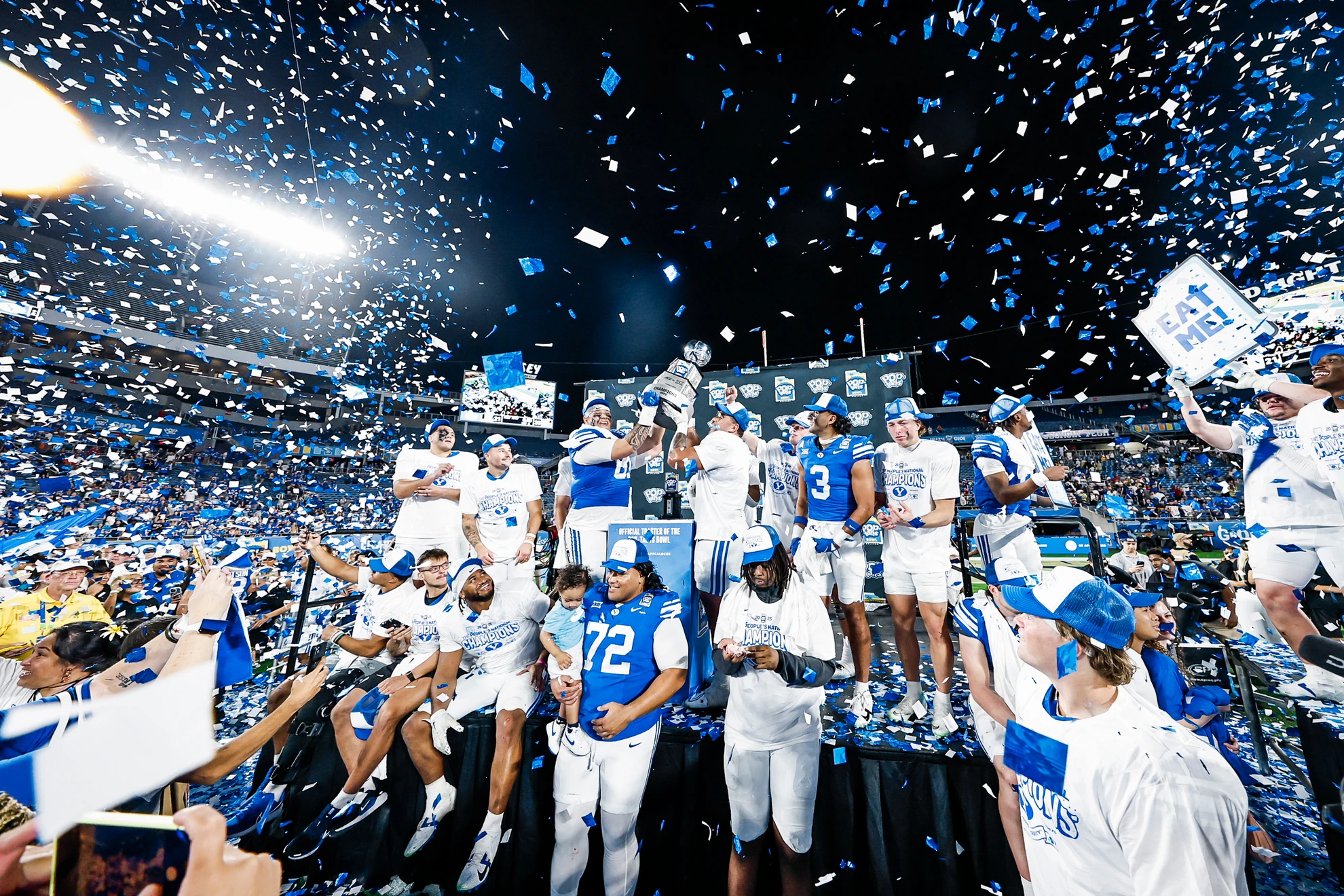
Fourth Quarter
On second-and-nine, Bachmeier found Roberts in a tight window for a gain of 18. Damuni added four yards, and on third down, Roberts caught a 7-yard pass to move the chains. Bachmeier and Ryan connected for the seventh time, this time for 13 yards to pin BYU at the Yellow Jacket six-yard line. After Kingston recorded a four-yard carry, Nawahine took the direct snap and plowed into the end zone. Keeping the offense on the field to go for two, Bachmier rushed it into the end zone to cut the deficit to three.
BYU forced the game’s first three-and-out. Kingston returned the punt 34 yards to set BYU up at its 45.
Bachmeier pitched to Damuni for a gain of five on first down. The freshman running back gained one yard on the next play, but the Cougars were unable to convert on third-and-four, and Vander Haar and the punting unit returned to the field, resulting in the second three-and-out of the game.
An illegal snap penalty pushed Georgia Tech back to its four-yard line. On second-and-14, King hit Rutherford for a gain of 12, and then another illegal snap penalty was enforced on the Yellow Jackets to set up third-and-seven. Haynes got just short of the line of gain before Glasker and Tanner Wall tackled him to force a punt. Kingston returned the punt four yards and set BYU up at its own 30 with 5:44 on the clock.
Following two incomplete passes, Bachmeier found Kingston at the BYU 34, and he advanced to the 43-yard line to grab the first down. Phillips secured a 14-yard pass from Bachmeier, and then Kingston caught a 15-yard pass to cap three consecutive first downs. After an eight-yard pass to Ryan to the Georgia Tech 20, the running back room led the way, kick-started by Nawahine picking up nine yards with a hurdle over a defender. Bachmeier passed to Damuni for a gain of seven, and then the Providence, Utah product powered into the end zone for his first career touchdown. Alongside Ferrin’s extra point, the Cougars took the lead, 25-21 with two minutes left.
Ferrin’s kickoff was returned 13 yards to pin Georgia Tech at its 21. Nusi Taumoepeau and Lutui hurried King and his pass fell incomplete on first down. On the next play, King lost the ball on a low snap but recovered his fumble for a loss of five yards. On third-and-15, another pass fell incomplete, forcing fourth-and-15. On the play, King went deep to Rivers for a gain of 66 at the BYU 18 with 52 seconds on the clock. The defense held the Yellow Jackets to three-straight incomplete passes, setting up fourth down with 14 seconds remaining. King attempted to hit Haynes in the end zone but his pass was intercepted by Johnson to seal the Pop Tarts Bowl victory 25-21.
Sports
Kats take care of Biblical Studies 117-57

The Bearkats (8-4) controlled the temp on both ends of the court, shooting close to 60 percent while limiting the Ambassadors to 31 percent. Sam Houston used its height advantage to dominate the paint, outscoring Biblical Studies 62-12 and outrebounding the Houston area team 66-29.
Isaiah Manning led the Kats with a career-high 27 points to go along with 10 rebounds for his first career double-double. Freshman Jacob Walker also scored a new career high with 24 points, Veljko Illic added 16 points and nine boards, freshman Matt Dann chipped in a career-high 12 points, freshman Jacoby Coleman finished with 11 and Damon Nicholas Jr. had 10.
Sam Houston built a huge first-half lead and never looked back.
The Kats went on a 10-0 run thanks to back-to-back 3s by Walker and Manning, who added a pair of layups to grab a 23-10 advantage. Dann punched in consecutive dunks after a free throw and a two more layups by Nicholas to cap the run at 19-0 to put the game away early as the Ambassadors went more than seven minutes without scoring.
Sam Houston shot a blistering 66 percent from the field in the first half, making 25 of 40 shot attempts. The Bearkats also held Biblical Studies to just 23 percent shooting to build a commanding 59-21 lead at the break.
Conference USA action resumes Jan. 2 when Sam Houston heads to Bowling Green, Kentucky to face WKU at 4 p.m. on ESPN+.
Sports
Texas A&M star Ifenna Cos‑Okpalla signs with League One Volleyball

Dec. 28, 2025, 12:20 p.m. CT
At the end of the season, after some of the adrenaline from the Texas A&M championship run had subsided, head coach Jamie Morrison revealed that a few players on his roster would have the opportunity to compete at the next level. While he didn’t name names, we had a pretty strong idea of which standout athletes he was referring to.
On Sunday morning, it was officially announced that senior middle blocker and 2025 NCAAVB Champion Ifenna Cos-Okpalla signed a professional contract to play with League One Volleyball (LOVB) Salt Lake. She joins senior opposite Logan Lednicky in the league, who recently signed with LOVB Houston. Cos-Okpalla was also drafted by MLV but ultimately chose to pursue her career with LOVB. We knew a move was coming soon after the news broke that she had signed with Valor Sports Agency just days before this announcement.
Cos-Okpalla is one of the foundational members of this Aggie championship team, having been part of the program for all four years and choosing to stay committed when Coach Morrison arrived to take over. She elevated her game each season under his leadership, helping her reach new heights and shatter multiple program records. She will leave Texas A&M as the all-time leader in total blocks (566), the single-season block leader (199), and the program’s hitting percentage leader (.422).
It’s fair to say she will be remembered as an Aggie legend, and she now turns her focus toward new goals with a promising professional volleyball career on the horizon.
Ifenna Cos-Okpalla Career stats:
Kills: 637 / 1.70 per set
Hitting %: .372
Blocks: 565 / 1.6 per set
Aces: 41 / .12 per set
Ifenna Cos-Okpalla Career Accolades:
- 2X All-SEC Team
- 4X SEC Player of the Week
- 10X SEC Defensive Player of the Week
- AVCA All-America First Team
- 2X AVCA All-Southwest Region Team
- NCAA Championship All-Tournament Team
- NCAA Champion
Contact/Follow us @AggiesWire on X and like our page on Facebook to follow ongoing coverage of Texas A&M news, notes, and opinions. Follow Jarrett Johnson on X: @whosnextsports1.
Sports
Deaf volleyball coach speaks volumes (video)

Sherry Bryant was born deaf, but that hasn’t stopped her from becoming a wife, mother and volleyball coach for Copper Sky Multigenerational Center’s youth volleyball league.
Bryant can’t hear and she doesn’t speak, but she uses hand gestures and written notes to communicate with players. During practice, she is often in the action pointing players to proper positions and cheering on successful plays.
Her desire to coach stems from more than her love of the game. She is able to spend time with her daughter on the court and show that deaf people are not limited.
“My daughter plays, and I feel it benefits her and the girls,” Bryant said. “If there are no volunteers, there might be no one to coach. Another reason is to show deaf people can do it.”
From time to time, Bryant’s players are unable to understand their coach’s instructions.
“This is my first (coaching) experience,” Bryant said. “My assistant coach (Nikki Lucchesi) helps me a lot. She speaks to the players.”
For Copper Sky Sports Coordinator David Aviles, picking Bryant to coach was simple.
“When you run a sports program there are times you run low on coaches,” Aviles said. “I reached out to the parents for the girls, and [Bryant] volunteered. She’s done a great job and really enjoys it.”
Bryant’s team won its first game. The players were attentive to her instructions.
“It’s inspirational for the kids to see that she’s out there coaching,” Aviles said. “She takes a hands-on approach and plays with them. It seems to be working well.”
This story appeared in the February issue of InMaricopa News.
Sports
Cos-Okpalla Inks Professional Contract with LOVB Salt Lake – Texas A&M Athletics
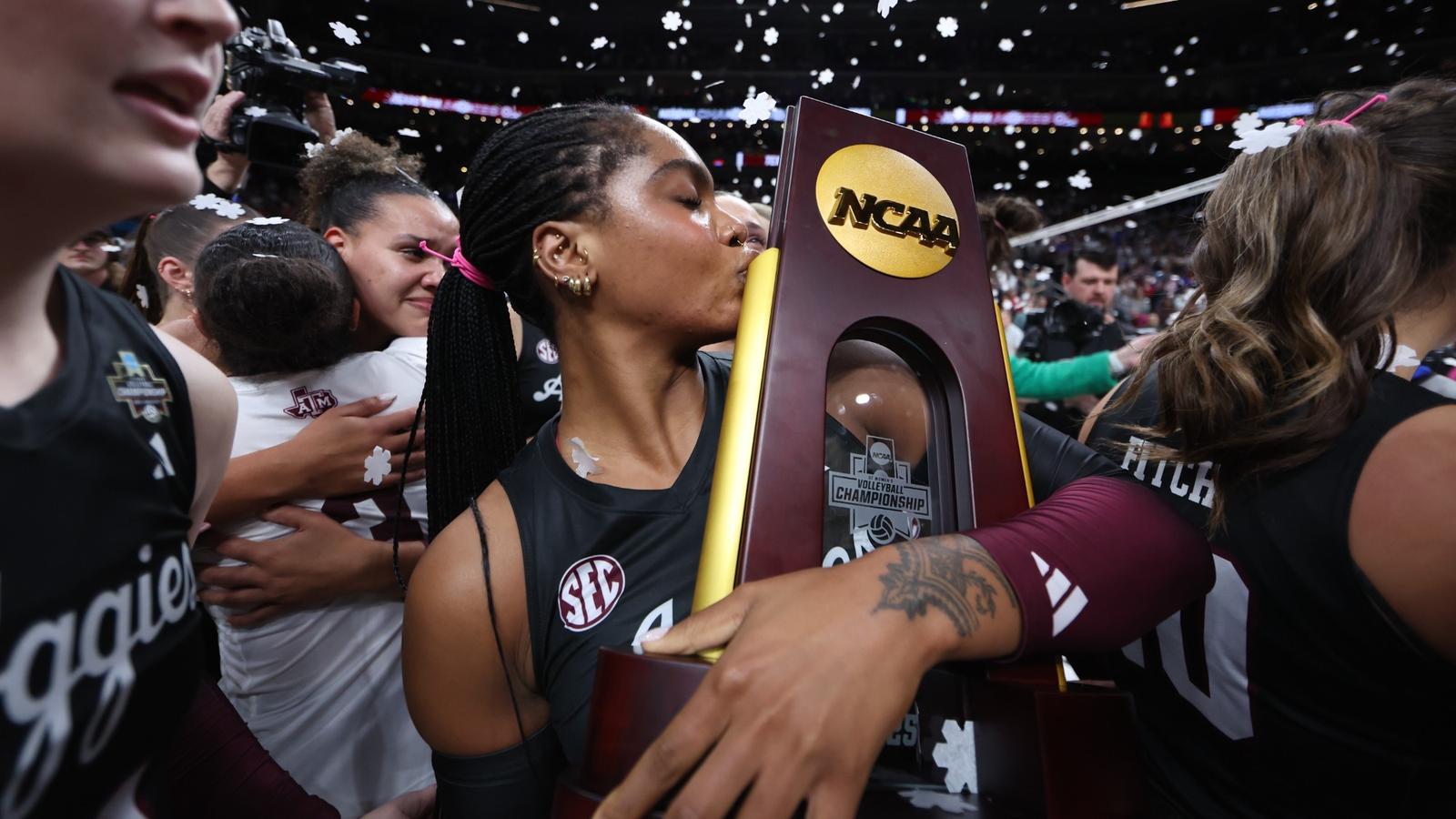
Fresh off leading the Aggies to their first NCAA title, Cos-Okpalla was announced as one of seven collegiate athletes selected for LOVB and will take her talents to Utah. The middle blocker was highly sought after following her senior season, as she garnered First Team All-America honors and led the country in blocks with 199 on the year.
“I couldn’t be happier for Ifenna [Cos-Okpalla] as she starts her pro career,” head coach Jamie Morrison said. “When I took this job one of my goals for the program was to become the best place to develop our athletes into professional and international players. We want to build a clear pathway from college to the professional game, and I know Ifenna is going to thrive at the next level.”
The Flower Mound, Texas, native made history in the final match of her career, setting the program record for career blocks. She entered the contest with 561, one shy of the Jazzmin Babers former record (562), and with her second of the match passed the milestone and added two more to finish her career with 565. Her senior season on its own also made history, as she tallied 199 stuffs which was a single-season record.
Cos-Okpalla’s versatility is what made her stand out, as offensively she recorded 629 kills over her four years while recording back-to-back years with over 200 in 2024 (228) and 2025 (236). Not only did her production rise every year, so did her efficiency which culminated in the program record for hitting percentage in a season this year at .422 percent.
The All-American separates herself from other middle blockers nationwide from the service line, racking up a team-high 42 aces this season which is the most by an Aggie since 2019. Her variety of scoring helped her accumulate 396.5 points on the year.
Leaving a legacy, Cos-Okpalla departs Aggieland a two-time All-American, two-time All-SEC First Team honoree, three-time All-Region selection, an NCAA and SEC All-Tournament Team member and a program record 14-time SEC weekly award winner.
FOLLOW THE AGGIES
Visit 12thMan.com for more information on Texas A&M volleyball. Fans can keep up to date with the A&M volleyball team on Facebook, Instagram and on Twitter/X by following @AggieVolleyball.
Sports
South Carolina Gamecocks Defensive Back Plans to Enter the Transfer Portal

After transferring to South Carolina prior to the 2025 season, defensive back Myles Norwood will enter the transfer portal in hopes of finishing his last year of eligibility elsewhere next fall. Norwood began his career at Iowa State, transferred to Ball State, and then to South Carolina. He will be looking for his fourth home this offseason.
Norwood was a collegiate track star turned defensive back in his college career. His journey began at Iowa Western Community College where he was a track and field participant for the Reivers. Following his freshman year in track he moved on to Iowa State to play for then head coach Matt Campbell (now Penn State). He spent two seasons with the cyclones appearing in just one game against West Virginia in 2022. In 2024, he transferred to New Mexico State in February, but never played for the Aggies before transferring to Ball State just three months later.
At Ball State, Norwood appeared in all 12 games for the Cardinals making seven starts. He was credited with with 38 tackles including 2.0 tackles for loss, one fumble recovery and a team-leading 10 pass breakups. After his breakout season with the Cardinals, Norwood commited to the Gamecocks for the 2025 season. He appeared in 10 games, with two starts, in his time in Columbia as he racked up 19 total tackles this past season.
Updated Transfer Portal Tracker

In addition to Norwood, 11 other Gamecocks have entered the portal so far with the offensive line room taking the biggest hit. That list includes OL Tree Babalade, OL Cason Henry, WR Brian Rowe Jr., QB Air Noland, OL Mac Walters, OL Nick Sharpe, OL Trovon Baugh, DL Zavian Hardy, LB Jaron Willis, LB Taeshawn Alston, and K Peyton Argent.
A few others have already declared their move to the 2026 NFL Draft. Wide receiver Jared Brown was the latest to make his intentions known. He joins defensive tackle Monkell Goodwine, defensive tackle Nick Barrett, and defensive end Bryan Thomas Jr. as those entering their names in the 2026 NFL Draft, with tight end Jordan Dingle expected to be the next name as his eligibility is out.
Join the community:
- Follow Alex Joyce on Twitter: @AlexJoyceSI
- Follow Joey Walraven on Twitter: @thejoeywalraven
You can follow us for future coverage by clicking “Follow” on the top right-hand corner of the page. Also, be sure to follow us on X at @GamecocksDigest and on Facebook!
You Might Also Like:
-

 Motorsports3 weeks ago
Motorsports3 weeks agoSoundGear Named Entitlement Sponsor of Spears CARS Tour Southwest Opener
-

 NIL3 weeks ago
NIL3 weeks agoDeSantis Talks College Football, Calls for Reforms to NIL and Transfer Portal · The Floridian
-
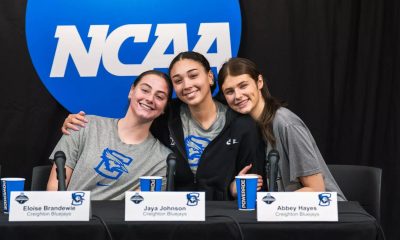
 Sports2 weeks ago
Sports2 weeks ago#11 Volleyball Practices, Then Meets Media Prior to #2 Kentucky Match
-

 Motorsports2 weeks ago
Motorsports2 weeks agoSunoco to sponsor No. 8 Ganassi Honda IndyCar in multi-year deal
-
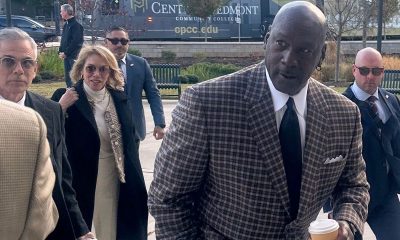
 Motorsports3 weeks ago
Motorsports3 weeks agoNASCAR owes $364.7M to teams in antitrust case
-
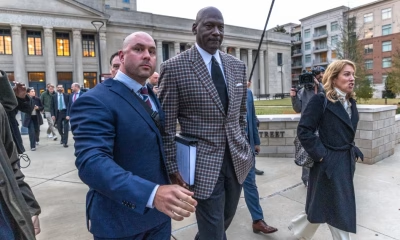
 Motorsports2 weeks ago
Motorsports2 weeks agoNascar legal saga ends as 23XI, Front Row secure settlement
-
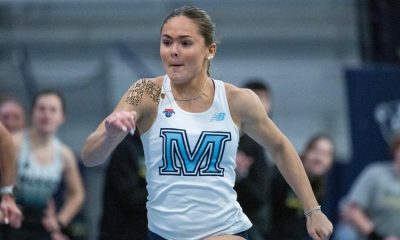
 Sports2 weeks ago
Sports2 weeks agoMaine wraps up Fall Semester with a win in Black Bear Invitational
-

 Motorsports3 weeks ago
Motorsports3 weeks agoNorth Florida Motorsports Park led by Indy 500 Champion and motorsports legend Bobby Rahal Nassau County, FL
-
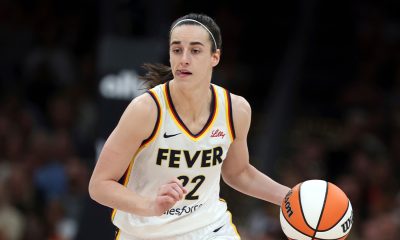
 Rec Sports2 weeks ago
Rec Sports2 weeks agoWNBA’s Caitlin Clark, Angel Reese and Paige Bueckers in NC, making debut for national team at USA camp at Duke
-

 Motorsports3 weeks ago
Motorsports3 weeks agoAccelerating Inclusion: Breaking Barriers in Motorsport


































